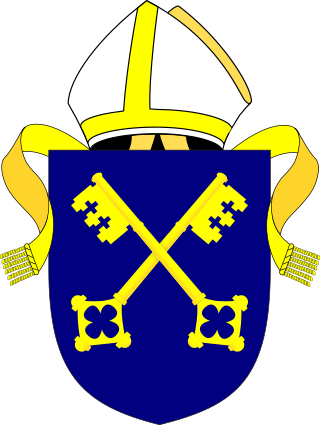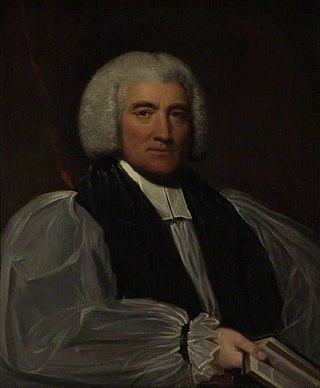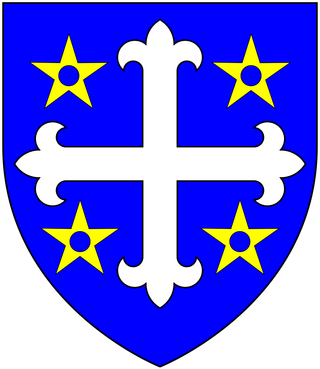
Godfrey Giffard was Chancellor of the Exchequer of England, Lord Chancellor of England and Bishop of Worcester.

An archdeacon is a senior clergy position in the Church of the East, Chaldean Catholic Church, Syriac Orthodox Church, Anglican Communion, St Thomas Christians, Eastern Orthodox churches and some other Christian denominations, above that of most clergy and below a bishop. In the High Middle Ages it was the most senior diocesan position below a bishop in the Catholic Church. An archdeacon is often responsible for administration within an archdeaconry, which is the principal subdivision of the diocese. The Oxford Dictionary of the Christian Church has defined an archdeacon as "A cleric having a defined administrative authority delegated to him by the bishop in the whole or part of the diocese." The office has often been described metaphorically as that of oculus episcopi, the "bishop's eye".

The Diocese of Gloucester is a Church of England diocese based in Gloucester, covering the non-metropolitan county of Gloucestershire. The cathedral is Gloucester Cathedral and the bishop is the Bishop of Gloucester. It is part of the Province of Canterbury.
Ralph of Maidstone was a medieval Bishop of Hereford.
Ivor Stanley Watkins was an Anglican bishop who served in two posts between 1946 and his death.
Arthur William Thomson Perowne was an Anglican bishop in Britain. He was the first Bishop of Bradford and, from 1931, was the Bishop of Worcester.

John Phillips Allcot Bowers was Bishop of Thetford in the Church of England in 1903–1926.

Richard Beadon was Master of Jesus College, Cambridge 1781–1789 and later Vice-Chancellor of the University, Bishop of Gloucester and Bishop of Bath and Wells.
The Archdeacon of Gloucester is a senior ecclesiastical officer in the Diocese of Gloucester, England whose responsibilities include the care of clergy and church buildings within the area of the Archdeaconry of Gloucester.
Richard Cheyney was an English churchman, bishop of Gloucester from 1562. Opposed to Calvinism, he was an isolated and embattled bishop of the reign of Elizabeth, though able to keep his see.
John Bullingham was the Bishop of Gloucester in the Church of England from 1581.

William Helyar of Coker Court, East Coker, in Somerset, was Archdeacon of Barnstaple and a chaplain to Queen Elizabeth I.

Rachel Treweek is an Anglican bishop who sits in the House of Lords as a Lord Spiritual. Since June 2015, she has served as Bishop of Gloucester, the first female diocesan bishop in the Church of England. A former speech and language therapist, from 2011 until 2015, she was the Archdeacon of Hackney in the Diocese of London.
The Archdeacon of Bristol is a senior ecclesiastical officer within the Diocese of Bristol. The archdeaconry was created – within the Diocese of Gloucester and Bristol – by Order in Council on 7 October 1836 and became part of the re-erected Diocese of Bristol on 8 February 1898.
Henry Hall (1734–1815) was Archdeacon of Dorset from 1801 until his death on 29 May 1815.
The Archdeacon of Cheltenham is a senior cleric in the Diocese of Gloucester who is responsible for some pastoral care and discipline of clergy in the Cheltenham archdeaconry.
Thomas Vyner DD was a Canon of Windsor from 1670 to 1673.

Philip John Andrew has been the Archdeacon of Cheltenham since 17 March 2017.
John Hills, D.D. was a priest and academic in the late 16th and early 17th centuries.
Byrom Eaton D.D. (1613–1703) was an English priest.
This page is based on this
Wikipedia article Text is available under the
CC BY-SA 4.0 license; additional terms may apply.
Images, videos and audio are available under their respective licenses.







